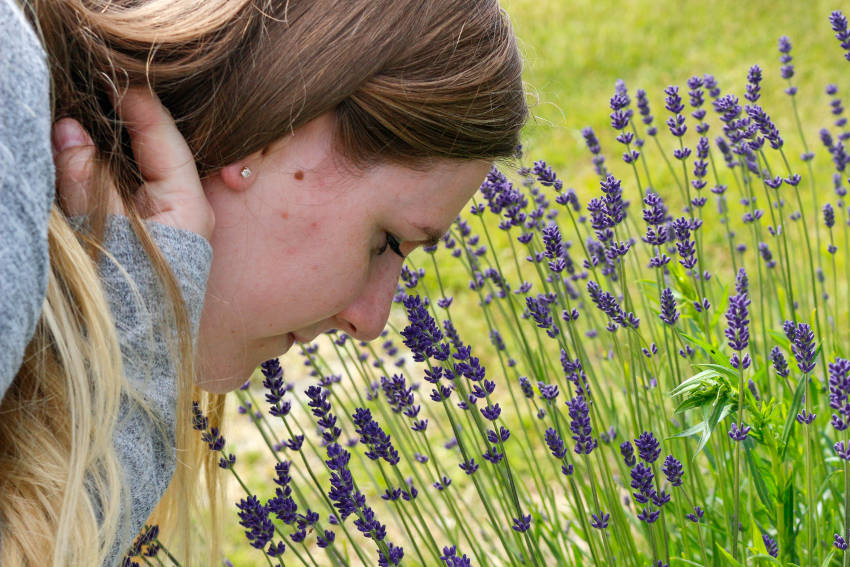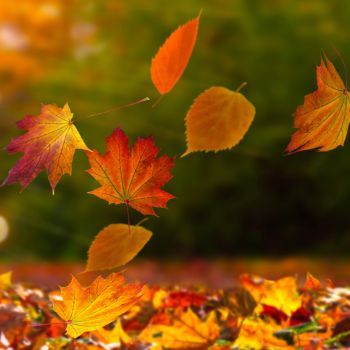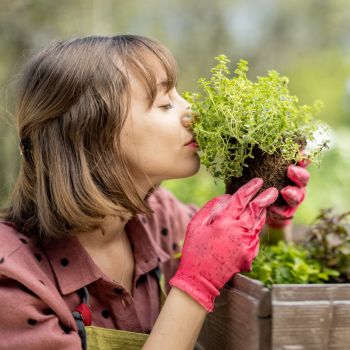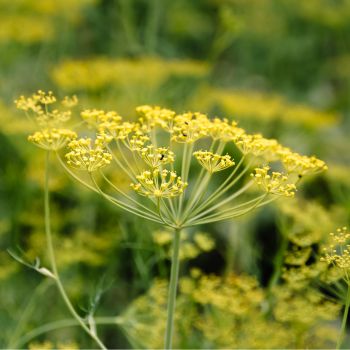A thriving garden is a treat for all the senses. Although most planning and planting advice focuses on colour, shape, and structure, fragrance plays a huge role in a happy garden experience.
Think of summer scents on a warm evening outdoors. Sudden bursts of fragrance that transport you to another place or time. Intriguing aromas that grab your attention and lead you deeper into the garden. All of these contribute to the joy of spending time in your outdoor creation.
But fragrance isn't only a treat for humans. Happily, many of the most highly scented flowers are also the most attractive to bees and other pollinators. Growing them will help the environment as well as increasing the pleasure you take from your garden.
But which seeds should you sow for a fabulously fragrant garden? Here are some of the most popular and aromatic choices.
Fragrant Flowers
Whether you love the controlled chaos of a cottage garden, or are aiming for a more manicured approach, annual and perennial blooms are the obvious choice for filling your garden with fragrance.
Sweet Peas - Although they're most widely grown for their climbing habit and colourful blooms, sweet peas have a light and vibrant fragrance with a musky undertone. For many gardeners, these flowers define the scent of summer.
Alyssum - Offering small, white flowers with a sweet honey smell, alyssums provide good ground cover that blooms from spring through to autumn. Alyssums are just as happy to grow on open ground or in containers.
Carnations - Carnation oil forms the base for many classic perfumes thanks to its peppery, floral aroma. Carnations also add visual interest with their double blooms, in colours ranging from white or yellow through to red or purple.
Four O'Clocks - This bushy perennial earns its name through opening its trumpet-shaped blooms in the late afternoon, filling the evening air with a strongly floral, citrus scent.
Honesty - Lunaria annua, or common honesty, is mainly grown for its white or purple cross-shaped blooms, which leave behind unique papery, coin-like seed pods at the end of the season. However, the flowers also provide a beguiling, sweetly floral fragrance throughout spring and early summer.
Sweet William - Sweet William, is a cottage garden favourite thanks to its striking blue-green foliage, pretty flowers, and ground-covering growth. It's also highly scented, releasing a spicy-sweet fragrance with a hint of cloves.
Calendula - Also known as pot marigold, calendula's bright orange flowers give off a resinous, sap-like, slightly bitter scent which contrasts nicely with its more traditionally fragrant flowerbed neighbours.
Aromatic Herbs
But as every kitchen gardener knows, fragrance isn't the exclusive territory of ornamental flowers. Culinary and medicinal herbs can play a huge part in a fragrant garden, with both foliage and blooms filling the air with their species' distinctive scents.
Lavender - A herb garden classic, lavender is festooned with tiny purple, pink, or white flowers, producing a heady violet aroma that captures the essence of a summer afternoon. Grow a mix of varieties and you can enjoy the scent throughout the warmer months.
Lemon Balm - Lemon balm might not be the most visually arresting herb, but its small white flowers are a magnet for bees. Its scent is fresh and subtly citrus, with a hint of mint that shows its close relationship to that family.
Rosemary - The taste and aroma of rosemary will be familiar to all keen cooks. Grow it in a sunny spot, and the same characteristics of wood, pine resin, and earthy camphor will be released by the spiky sprigs and delicate pink, purple, or blue flowers.
The Mint Family - From invigorating spearmint through to spicy peppermint, herbs in the mint family are easy to grow, and full of essential oils which perfume the air as you pass.
Thyme - Thyme is happiest planted in well-drained, stony ground, where the sun's heat can release and intensify its distinctive savoury, woody, and warming aroma.
Oregano - Better known for its affinity with pizza and pasta, oregano is worth adding to your garden for its scent alone. Both foliage and flowers release a rich and savoury aroma that mixes pine, citrus, and mint.
Sweet Marjoram - Closely related to oregano and sharing a similar but milder scent, sweet marjoram's lilac or white flowers are wonderful for attracting bees throughout the summer months. Also, with its low-growing habit, it's ideal for edging and container growing.
Sage - Common sage is an attractive, bushy perennial herb used both medicinally and in the kitchen. Its coarse but soft leaves release a warming, full, slightly bitter scent when rubbed between the fingers.
Basil - Basil is a classic culinary herb, with a complex grassy fragrance combining citrus, cloves, and aniseed. Basil is also useful as a companion plant for tomatoes, with its strong aroma deterring aphids and other pests.
Anise Hyssop - Growing up to 1.5m high and 30cm wide, anise hyssop is equally at home in a herb garden or an ornamental border. Its spikes of dense indigo flowers give off a distinctive scent that marries liquorice and mint to great effect.
Enjoying the Fragrance to the Full
Although your plants' fragrances will spread naturally on the breeze, careful placement will produce the most pleasing effects.
- Plant near walkways where the scents will be released as you brush past.
- Grow in containers near doorways and next to windows to let the scent waft indoors on a warm day.
- Surround dining and seating areas with a mix of soothingly fragrant plants to build a relaxing atmosphere.
- Plant in areas that trap the sun's rays, such as against walls or between patio paving, to release scented oils in the heat.
Of course, colour and structure will always be the main foundations of a garden. But if you're not planning your sowing for fragrance too, you're missing out on an extra dimension of gardening pleasure.






